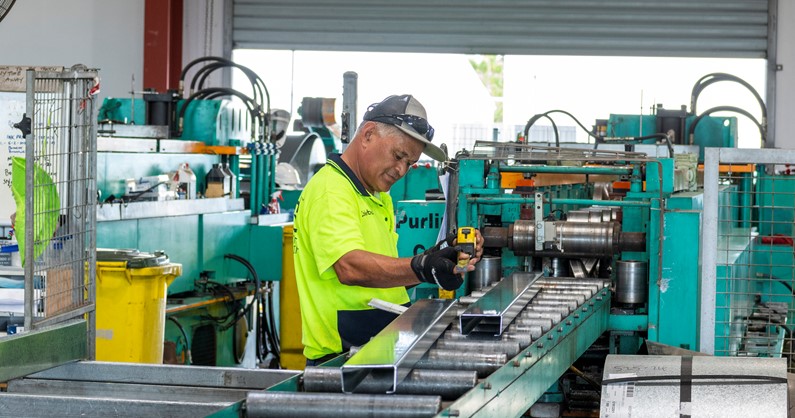The Role of Roll Forming in Sustainable Steel Production: Minimizing Waste and Maximizing Efficiency

In today’s world, sustainability is a key consideration in various industries, including steel production. Roll forming, a highly efficient and versatile metal forming process, plays a significant role in achieving sustainable steel manufacturing practices. This article will look at how roll forming contributes to sustainable steel production by reducing waste and increasing efficiency.
Efficient Material Utilization
One of the primary ways roll forming promotes sustainability is through efficient material utilization. Roll forming optimizes the use of flat metal coils, transforming them into complex profiles with minimal waste. The continuous bending process ensures that the material is utilized to its fullest potential, minimizing scrap, and reducing overall material consumption.
Waste Reduction
Compared to other metal forming processes, roll forming generates significantly less waste. Traditional methods like stamping or machining often produce substantial amounts of leftover material that goes to waste. In roll forming, careful design and precision tooling minimize excess material, resulting in minimal scrap generation. This waste reduction not only saves resources but also reduces disposal costs and environmental impact.
Energy Efficiency
Roll Forming is inherently energy- efficient when compared to alternative forming processes. The continuous nature of roll forming reduces the need for frequent starts and stops, which can consume substantial energy. Additionally, the high-speed operation of roll forming lines and optimized tooling designs contribute to energy savings, making it a sustainable choice for steel production.
Integration of Recycled Materials
Roll forming readily integrates recycled materials into the manufacturing process. Steel is one of the most recycled materials globally, and roll forming provides a seamless way to incorporate recycled content into new products. By utilizing recycled steel, roll forming helps reduce the demand for virgin resources, conserving energy and reducing greenhouse gas emissions associated with mining and processing raw materials.
Design for Lightweighting
Roll forming enables the production of lightweight steel profiles with excellent strength-to-weight ratios. This design approach promotes sustainable practices by reducing the overall material requirements for various applications. Lightweight steel components contribute to fuel efficiency in transportation, reduce the environmental impact of buildings, and offer sustainable solutions across industries.
Continuous Improvement and Process Optimization
Roll forming manufacturers are committed to continuous improvement and process optimization. They invest in research and development to enhance efficiency, minimize waste, and improve product quality. Advanced technologies, such as real-time monitoring systems and automated controls, allow for better process control and waste reduction. The pursuit of optimization in roll forming aligns with the principles of sustainable steel production.
Conclusion
Roll forming plays a pivotal role in sustainable steel production by minimizing waste and maximizing efficiency. Through its efficient material utilization, waste reduction, energy efficiency, integration of recycled materials, and design for light weighting, roll forming helps the steel industry reduce its environmental footprint. As manufacturers continue to embrace advancements in technology and process optimization, roll forming will remain a sustainable choice for shaping steel, driving the industry towards a more sustainable future.

